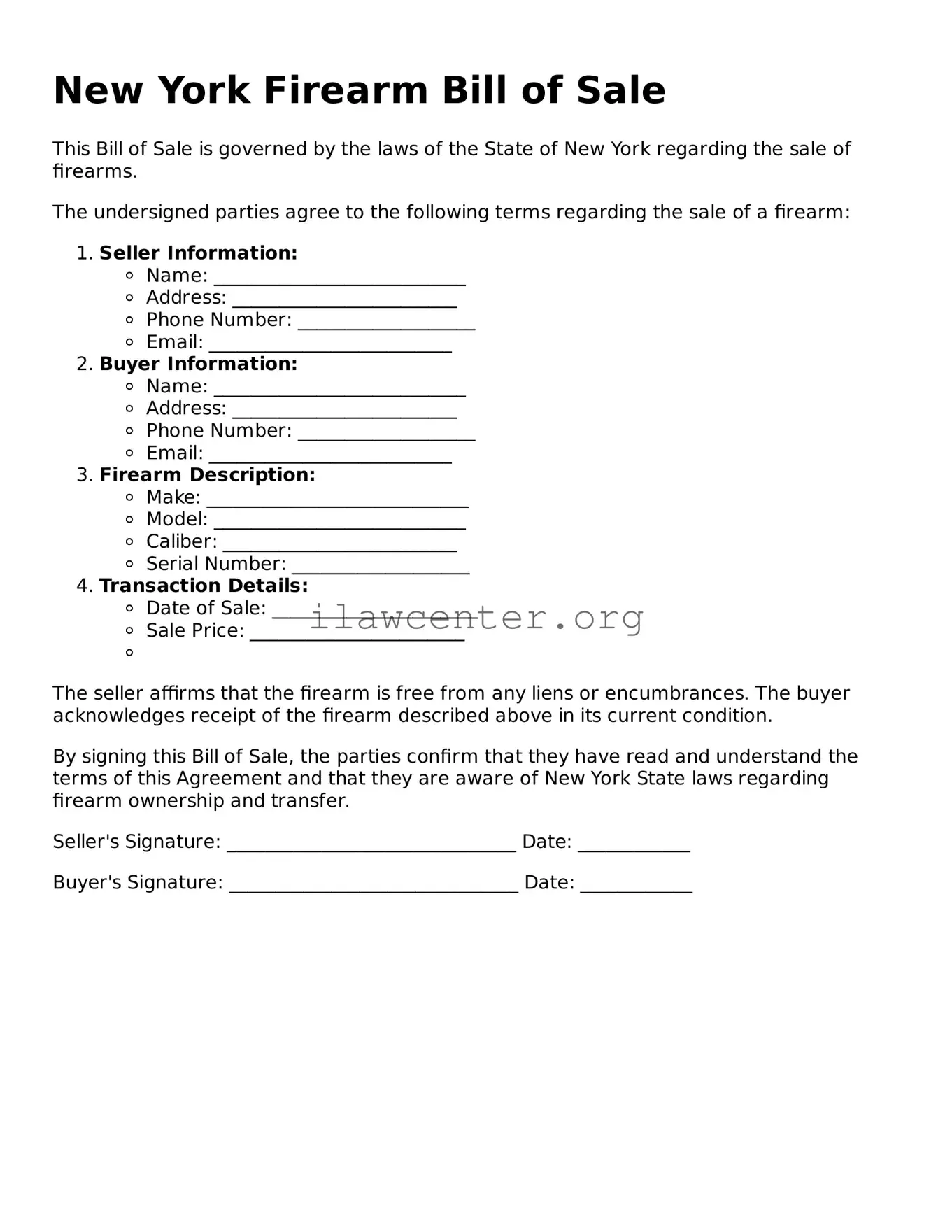Filling out the New York Firearm Bill of Sale form can be straightforward, but several common mistakes can lead to complications. One common error is failing to provide complete identification details. Ensuring that both parties include full names, addresses, and legal identification numbers is crucial. Missing this information can delay the processing of the transaction or cause legal issues later on.
Another mistake involves not noting the specific details of the firearm being sold. This includes the make, model, caliber, and serial number. Without this information, it is difficult to verify the firearm’s history, and potential buyers may question the legitimacy of the sale.
People also often neglect to sign and date the form. Both seller and buyer need to provide their signatures on the document to validate the transaction. If the form lacks proper signatures, it may not hold up in legal situations.
Additionally, some individuals disregard the importance of witness signatures, if required. In cases where a witness is necessary, having one present during the transaction and ensuring their signature is included on the form is crucial to solidify the sale’s legality.
Improperly detailing the payment method can create confusion. Individuals often skip this section entirely or write in vague terms. Stating whether payment was made in cash, check, or another form helps clarify the transaction details and protects both parties.
Some people make the mistake of not retaining a copy of the signed Bill of Sale for their records. Both parties should keep a copy to document the transaction. This can be important for future reference, especially if questions arise regarding ownership.
It is also common to overlook the date of sale. Including an accurate date is essential, as it establishes when the transfer of ownership occurred and can be important for legal purposes.
Many individuals fail to confirm the legality of the transaction before completion. It is advisable for both the seller and the buyer to ensure that the firearm is legal to sell and purchase, complying with both state and federal laws.
Lastly, individuals might ignore additional clauses that could protect their rights. Including terms about warranties, the condition of the firearm, or any other agreements made during the sale can provide clarity and protect both parties in the event of a dispute.
